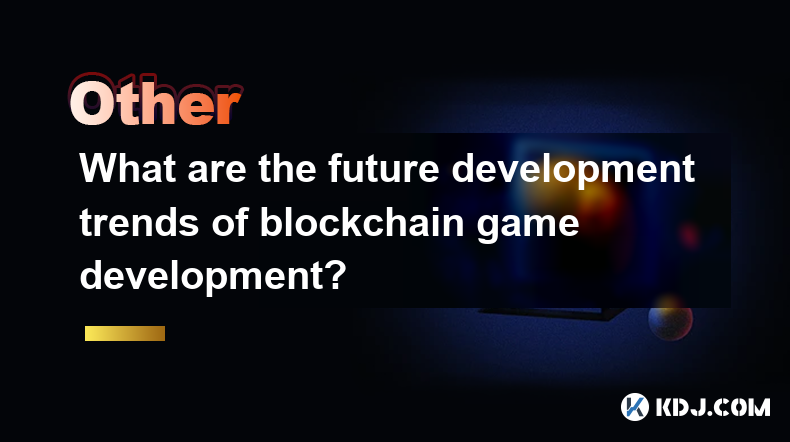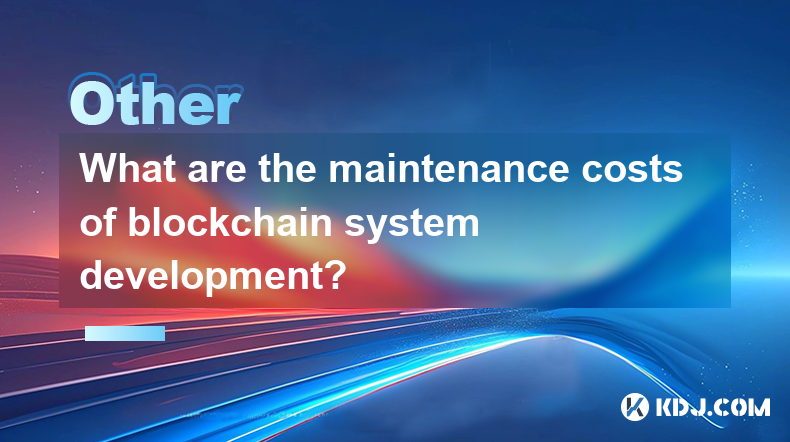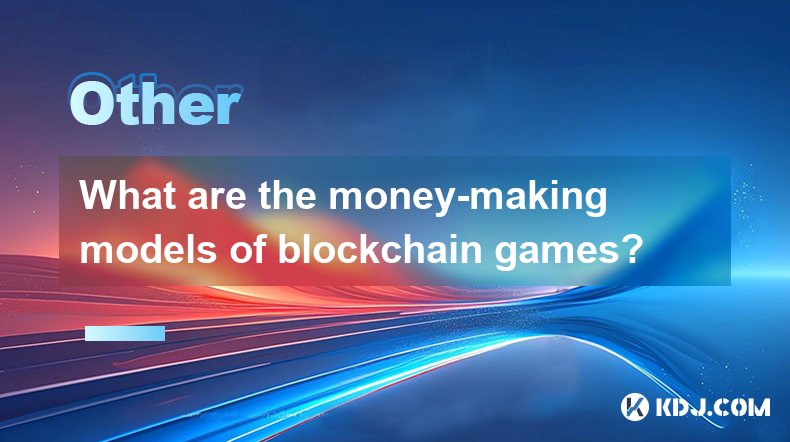-
 Bitcoin
Bitcoin $78,748.0325
-5.87% -
 Ethereum
Ethereum $1,601.5786
-11.64% -
 Tether USDt
Tether USDt $0.9995
-0.01% -
 XRP
XRP $1.9278
-10.45% -
 BNB
BNB $563.2751
-4.91% -
 USDC
USDC $1.0002
0.02% -
 Solana
Solana $107.0570
-11.34% -
 Dogecoin
Dogecoin $0.1502
-11.43% -
 TRON
TRON $0.2316
-2.13% -
 Cardano
Cardano $0.5804
-11.15% -
 UNUS SED LEO
UNUS SED LEO $8.8730
-2.96% -
 Chainlink
Chainlink $11.4151
-11.57% -
 Toncoin
Toncoin $2.9503
-9.14% -
 Stellar
Stellar $0.2279
-10.05% -
 Shiba Inu
Shiba Inu $0.0...01147
-7.08% -
 Avalanche
Avalanche $16.2365
-8.51% -
 Sui
Sui $1.9405
-12.37% -
 Hedera
Hedera $0.1418
-12.64% -
 MANTRA
MANTRA $6.1017
-2.53% -
 Polkadot
Polkadot $3.6809
-7.16% -
 Bitcoin Cash
Bitcoin Cash $275.5230
-9.51% -
 Litecoin
Litecoin $70.9988
-14.40% -
 Dai
Dai $1.0002
0.00% -
 Ethena USDe
Ethena USDe $0.9989
-0.03% -
 Bitget Token
Bitget Token $4.1440
-7.11% -
 Pi
Pi $0.5972
-6.51% -
 Monero
Monero $200.6546
-6.35% -
 Hyperliquid
Hyperliquid $10.5782
-12.35% -
 Uniswap
Uniswap $5.1904
-11.74% -
 OKB
OKB $53.0659
0.93%
How does the consensus mechanism in blockchain prevent malicious node attacks?
Blockchain's consensus mechanisms, like Proof-of-Work and Proof-of-Stake, deter malicious node attacks by introducing computational costs or staking requirements, incentivizing honest behavior and punishing malicious actions.
Mar 13, 2025 at 04:10 pm

How Does the Consensus Mechanism in Blockchain Prevent Malicious Node Attacks?
Key Points:
- Understanding Consensus Mechanisms: A deep dive into the core functions of various consensus mechanisms and their inherent strengths against different types of attacks.
- Byzantine Fault Tolerance (BFT): Exploring how BFT-based mechanisms, like Practical Byzantine Fault Tolerance (PBFT) and its variations, handle malicious nodes aiming to disrupt the network.
- Proof-of-Work (PoW): Examining how PoW's computational cost deters attacks by making it prohibitively expensive for attackers to control a significant portion of the network. We will analyze its vulnerabilities and limitations.
- Proof-of-Stake (PoS): Analyzing the effectiveness of PoS in mitigating malicious activity by requiring validators to stake their own cryptocurrency, thus incentivizing honest behavior and punishing malicious actions. We'll also discuss variations like Delegated Proof-of-Stake (DPoS).
- Other Consensus Mechanisms: Briefly exploring less common mechanisms like Proof-of-Authority (PoA), Proof-of-History (PoH), and their respective strengths and weaknesses in resisting attacks.
Understanding Consensus Mechanisms
- Blockchain technology relies on consensus mechanisms to ensure the integrity and security of the network. These mechanisms dictate how nodes reach agreement on the valid state of the blockchain, preventing fraudulent transactions and maintaining data consistency. Without a robust consensus mechanism, a blockchain is vulnerable to various attacks that could compromise its security and reliability. Different consensus mechanisms employ different strategies to achieve this consensus, each with its own strengths and weaknesses against different types of malicious attacks. A thorough understanding of these mechanisms is crucial to grasping how they effectively counter malicious actors attempting to manipulate the blockchain. This involves not just understanding the theoretical framework but also analyzing real-world examples of successful and unsuccessful attempts to exploit vulnerabilities in these mechanisms. For instance, studying historical attacks on various blockchains can illuminate the strengths and weaknesses of their respective consensus mechanisms and highlight the ongoing evolution of these mechanisms in response to evolving attack vectors. The constant arms race between blockchain developers and malicious actors is a driving force in the ongoing innovation and refinement of consensus mechanisms. The ability to analyze these attacks and develop effective countermeasures is vital for the continued growth and security of blockchain technology. The complexity of modern blockchain networks necessitates a nuanced understanding of how various attacks could be launched, and how the underlying consensus mechanism would respond to neutralize them. This involves not only understanding the technical details but also appreciating the economic incentives at play, which can heavily influence the behavior of both honest and malicious actors.
Byzantine Fault Tolerance (BFT)
- Byzantine Fault Tolerance (BFT) is a family of algorithms designed to ensure the correct functioning of a distributed system even in the presence of malicious or faulty nodes. This is crucial in blockchain networks, where a significant number of nodes might be compromised or exhibit unexpected behavior. BFT algorithms typically work by employing a process of communication and verification among nodes to reach agreement on the valid state of the blockchain. A prominent example of a BFT algorithm is Practical Byzantine Fault Tolerance (PBFT), which uses a leader-based approach. The leader proposes a new block, and other nodes verify its validity. If a sufficient number of nodes agree on the block's validity, it's added to the blockchain. However, PBFT suffers from scalability limitations, as the number of messages exchanged grows rapidly with the number of nodes. This makes it less suitable for large-scale public blockchains. Variations and improvements on PBFT, designed to address its scalability issues, continue to be developed and implemented in different blockchain projects. Understanding the nuances of these variations, such as their message passing protocols and fault tolerance thresholds, is essential for a comprehensive understanding of how BFT mechanisms protect against malicious nodes. Analyzing the various attack vectors that could be employed against BFT-based systems, such as Sybil attacks or denial-of-service attacks, is also crucial. Furthermore, studying the trade-offs between fault tolerance, scalability, and performance is essential to evaluate the effectiveness of different BFT algorithms in various blockchain contexts.
Proof-of-Work (PoW)
- Proof-of-Work (PoW) is a consensus mechanism that requires nodes to solve complex computational puzzles to validate transactions and add new blocks to the blockchain. The first node to solve the puzzle gets to add the block and receives a reward. The computational cost associated with solving these puzzles makes it economically infeasible for malicious actors to control a significant portion of the network and manipulate the blockchain. The difficulty of the puzzles adjusts dynamically based on the network's computational power, ensuring a consistent block generation time. However, PoW has its drawbacks. It's energy-intensive, raising environmental concerns. Furthermore, it's susceptible to 51% attacks, where a single entity controls more than half of the network's hash rate, allowing them to potentially reverse transactions or double-spend coins. While highly unlikely on large, established networks, this vulnerability highlights the need for continuous monitoring and adaptation. The computational power required to mount a 51% attack is a significant deterrent, but the potential for such an attack remains a significant concern, particularly for smaller or less established cryptocurrencies. Analyzing the cost-benefit analysis for a potential attacker is critical to understanding the resilience of a PoW blockchain to such attacks. This includes assessing the cost of acquiring the necessary hardware, the operational costs of maintaining it, and the potential profits that could be gained from a successful attack, weighed against the risk of detection and legal repercussions.
Proof-of-Stake (PoS)
- Proof-of-Stake (PoS) is an alternative consensus mechanism that aims to address the energy consumption issues of PoW. In PoS, validators are selected to create new blocks based on the amount of cryptocurrency they stake. The more cryptocurrency a validator stakes, the higher their chance of being selected. This incentivizes honest behavior, as malicious validators risk losing their staked cryptocurrency if they act dishonestly. The process of staking and validation involves a complex interplay of cryptographic techniques, random selection algorithms, and economic incentives, all designed to ensure the integrity of the blockchain. Understanding the nuances of the specific algorithms employed in different PoS implementations is vital. Different PoS variations exist, each with its unique features and vulnerabilities. Delegated Proof-of-Stake (DPoS), for example, allows token holders to delegate their voting rights to elected representatives who then validate transactions. While PoS significantly reduces energy consumption compared to PoW, it's not entirely immune to attacks. For instance, it's vulnerable to "nothing-at-stake" attacks, where validators can participate in multiple blockchains simultaneously without any significant penalty. Furthermore, the concentration of staked coins in the hands of a few powerful entities could potentially lead to vulnerabilities. The security and resilience of PoS mechanisms are closely tied to the specific parameters of the system, including the staking requirements, the penalty mechanisms for malicious behavior, and the overall network architecture. Analyzing the trade-offs between security, decentralization, and efficiency is essential for a comprehensive evaluation of PoS consensus mechanisms.
Other Consensus Mechanisms
- Beyond PoW and PoS, several other consensus mechanisms exist, each with its unique approach to achieving consensus and resisting attacks. Proof-of-Authority (PoA) relies on a pre-selected set of validators, typically organizations or individuals with established reputations. This simplifies the process and enhances transaction speed but reduces decentralization. Proof-of-History (PoH) uses cryptographic hash chains to establish a verifiable chronological order of events, enhancing the security and efficiency of the consensus process. Each of these mechanisms presents a different set of trade-offs between security, decentralization, scalability, and energy efficiency. Understanding the strengths and weaknesses of each mechanism is crucial in selecting the most appropriate consensus mechanism for a given blockchain application. The choice often depends on the specific requirements of the network, including the desired level of decentralization, the acceptable level of energy consumption, and the need for scalability. The ongoing research and development in the field of consensus mechanisms continually introduce new approaches and refinements, pushing the boundaries of what's possible in terms of security, efficiency, and scalability. Analyzing the emerging trends and comparing the performance of different consensus mechanisms under various attack scenarios are essential for keeping abreast of the latest advancements in blockchain technology.
FAQs:
Q: What is the most secure consensus mechanism?
A: There's no single "most secure" consensus mechanism. The security of a consensus mechanism depends on several factors, including its design, implementation, and the specific characteristics of the blockchain network it's used in. PoW is generally considered secure due to its computational cost, but it's energy-intensive. PoS offers a more energy-efficient alternative, but it's susceptible to different types of attacks. The optimal choice depends on the specific trade-offs between security, energy efficiency, scalability, and decentralization.
Q: Can a blockchain be completely secure from all attacks?
A: No blockchain is completely immune to all attacks. While consensus mechanisms significantly enhance security, vulnerabilities can always exist, especially in the implementation or in unforeseen attack vectors. Continuous monitoring, auditing, and updates are crucial for maintaining the security of a blockchain network.
Q: How do consensus mechanisms handle network partitions?
A: Network partitions, where parts of the network become isolated, can pose a challenge to consensus mechanisms. Different mechanisms handle partitions differently. Some might temporarily halt operations until the partition is resolved, while others might allow different parts of the network to continue operating independently, potentially leading to temporary inconsistencies that are later reconciled.
Q: What is the role of cryptography in consensus mechanisms?
A: Cryptography plays a fundamental role in securing consensus mechanisms. It's used for digital signatures, hashing, encryption, and other cryptographic operations to ensure the integrity and authenticity of transactions and blocks, preventing tampering and fraud. The specific cryptographic algorithms used can significantly impact the security and efficiency of the consensus mechanism.
Q: How are malicious nodes identified and penalized?
A: The methods for identifying and penalizing malicious nodes vary depending on the consensus mechanism. In PoW, malicious activity is difficult to directly identify but is mitigated by the computational cost. In PoS, malicious validators risk losing their staked cryptocurrency. Some mechanisms employ reputation systems or other mechanisms to track and penalize malicious behavior. The effectiveness of these mechanisms depends on the specific design and implementation of the consensus protocol.
Disclaimer:info@kdj.com
The information provided is not trading advice. kdj.com does not assume any responsibility for any investments made based on the information provided in this article. Cryptocurrencies are highly volatile and it is highly recommended that you invest with caution after thorough research!
If you believe that the content used on this website infringes your copyright, please contact us immediately (info@kdj.com) and we will delete it promptly.
- AVAX Price Eyes Rebound To As High As $44
- 2025-04-07 09:15:12
- U.S. Representatives Zach Nunn (R-Iowa) and Jim Himes (D-Conn.) reintroduced a bill to help combat illicit finance and terrorist financing on digital asset platforms
- 2025-04-07 09:15:12
- Binance Coin (BNB) Price Prediction: Targeting $676 as Bears Consolidate Below $640
- 2025-04-07 09:10:13
- US Seizes $201400 in Cryptocurrency Linked to Hamas Financing
- 2025-04-07 09:10:13
- Grayscale Files a Proposal to List the Grayscale AVAX Trust as a Spot ETF
- 2025-04-07 09:05:13
- If you could swap any U.S. coin design with a historical figure or symbol not yet featured, what would it be and why?
- 2025-04-07 09:05:13
Related knowledge

Is the ranking of Chinese blockchain apps real and reliable?
Apr 04,2025 at 09:01pm
The ranking of Chinese blockchain apps has become a topic of interest for many in the cryptocurrency community, as it provides insights into the popularity and adoption of blockchain technology within China. However, the reliability and authenticity of these rankings are often questioned. This article aims to delve into the factors that influence these ...

What are the future development trends of blockchain game development?
Apr 03,2025 at 05:00am
Blockchain technology has revolutionized various industries, and gaming is no exception. As we look to the future, several trends are set to shape the development of blockchain games. These trends not only promise to enhance the gaming experience but also to integrate blockchain technology more seamlessly into the gaming ecosystem. Let's explore these t...

What are the high-return opportunities for blockchain investments?
Apr 05,2025 at 02:35pm
Blockchain technology has revolutionized the financial world, offering numerous high-return investment opportunities. These opportunities span various sectors within the cryptocurrency ecosystem, including cryptocurrencies, decentralized finance (DeFi), non-fungible tokens (NFTs), and blockchain startups. Each of these areas presents unique risks and re...

What are the maintenance costs of blockchain system development?
Apr 03,2025 at 06:07pm
The maintenance costs of blockchain system development are multifaceted and depend on various factors. These costs can include technical maintenance, security updates, infrastructure expenses, and personnel costs. Understanding these elements is crucial for anyone planning to develop or maintain a blockchain system. Technical MaintenanceTechnical mainte...

What are the money-making models of blockchain games?
Apr 04,2025 at 02:00pm
Blockchain games have emerged as a revolutionary way for players to earn real money while enjoying their favorite pastime. These games leverage the power of blockchain technology to create unique money-making models that benefit both the players and the developers. In this article, we will explore the various money-making models of blockchain games and ...

What are the money-making opportunities in the application of blockchain in the field of Internet of Things?
Apr 05,2025 at 10:35pm
The integration of blockchain technology with the Internet of Things (IoT) presents numerous money-making opportunities. Blockchain, with its decentralized and secure nature, can revolutionize how IoT devices interact, manage data, and conduct transactions. This article will explore various avenues where entrepreneurs, developers, and investors can capi...

Is the ranking of Chinese blockchain apps real and reliable?
Apr 04,2025 at 09:01pm
The ranking of Chinese blockchain apps has become a topic of interest for many in the cryptocurrency community, as it provides insights into the popularity and adoption of blockchain technology within China. However, the reliability and authenticity of these rankings are often questioned. This article aims to delve into the factors that influence these ...

What are the future development trends of blockchain game development?
Apr 03,2025 at 05:00am
Blockchain technology has revolutionized various industries, and gaming is no exception. As we look to the future, several trends are set to shape the development of blockchain games. These trends not only promise to enhance the gaming experience but also to integrate blockchain technology more seamlessly into the gaming ecosystem. Let's explore these t...

What are the high-return opportunities for blockchain investments?
Apr 05,2025 at 02:35pm
Blockchain technology has revolutionized the financial world, offering numerous high-return investment opportunities. These opportunities span various sectors within the cryptocurrency ecosystem, including cryptocurrencies, decentralized finance (DeFi), non-fungible tokens (NFTs), and blockchain startups. Each of these areas presents unique risks and re...

What are the maintenance costs of blockchain system development?
Apr 03,2025 at 06:07pm
The maintenance costs of blockchain system development are multifaceted and depend on various factors. These costs can include technical maintenance, security updates, infrastructure expenses, and personnel costs. Understanding these elements is crucial for anyone planning to develop or maintain a blockchain system. Technical MaintenanceTechnical mainte...

What are the money-making models of blockchain games?
Apr 04,2025 at 02:00pm
Blockchain games have emerged as a revolutionary way for players to earn real money while enjoying their favorite pastime. These games leverage the power of blockchain technology to create unique money-making models that benefit both the players and the developers. In this article, we will explore the various money-making models of blockchain games and ...

What are the money-making opportunities in the application of blockchain in the field of Internet of Things?
Apr 05,2025 at 10:35pm
The integration of blockchain technology with the Internet of Things (IoT) presents numerous money-making opportunities. Blockchain, with its decentralized and secure nature, can revolutionize how IoT devices interact, manage data, and conduct transactions. This article will explore various avenues where entrepreneurs, developers, and investors can capi...
See all articles





















































































